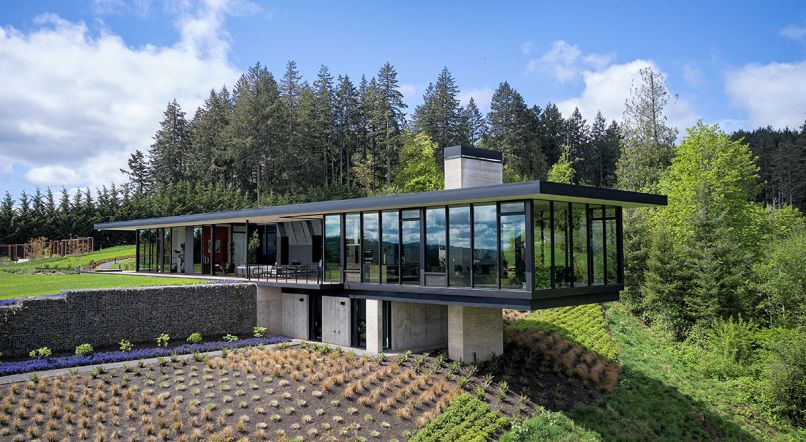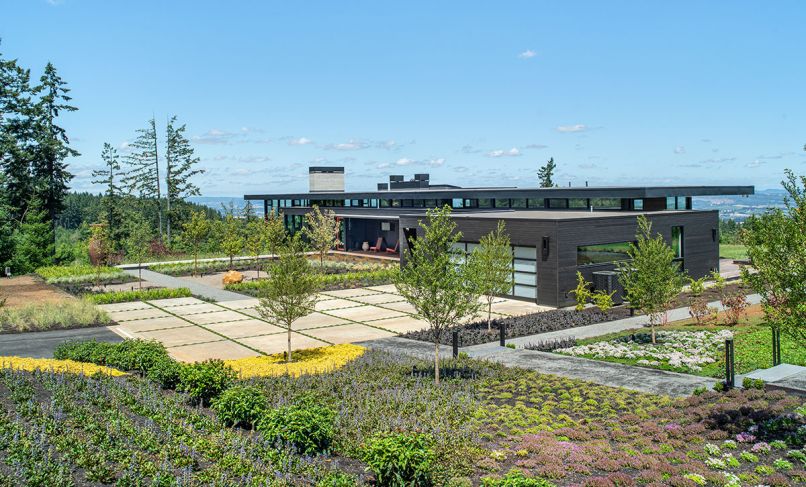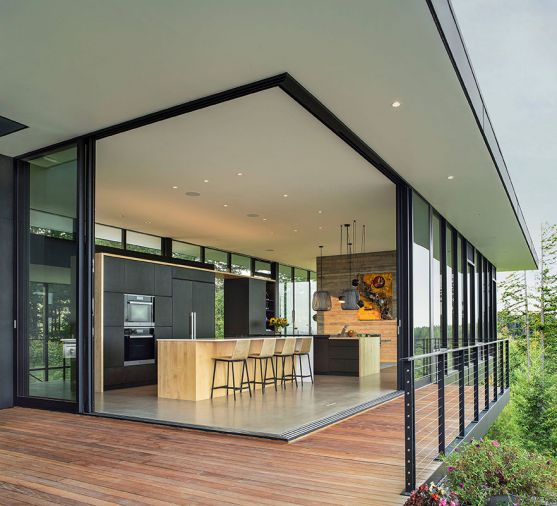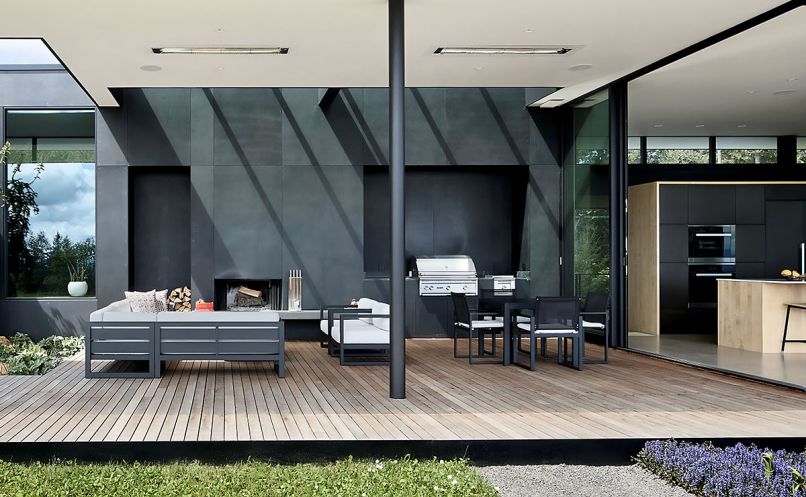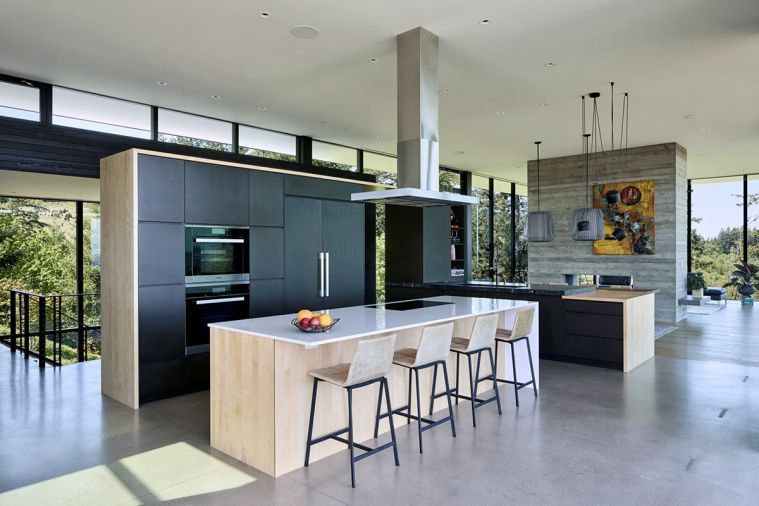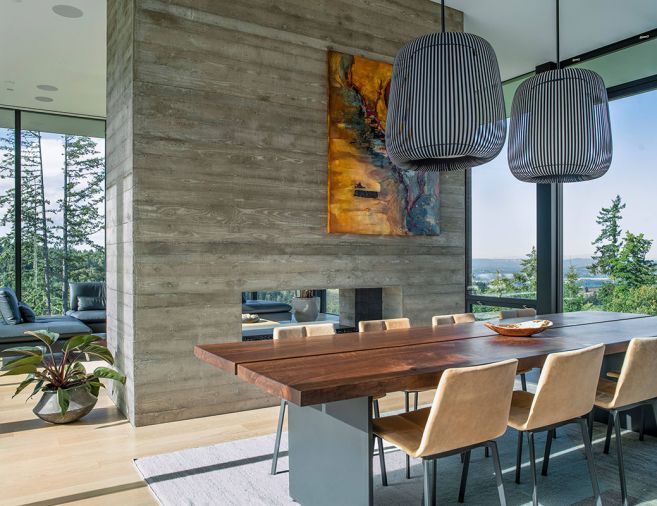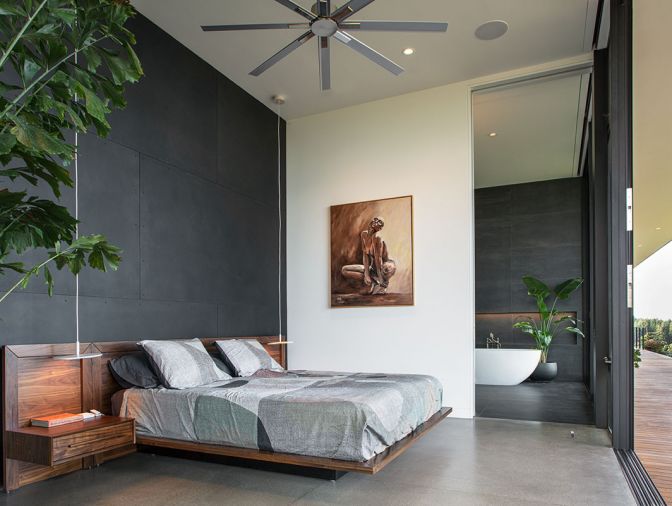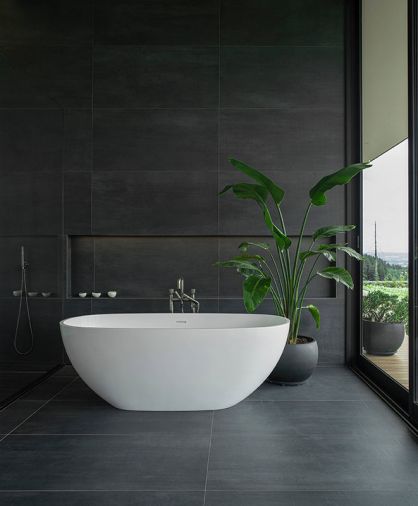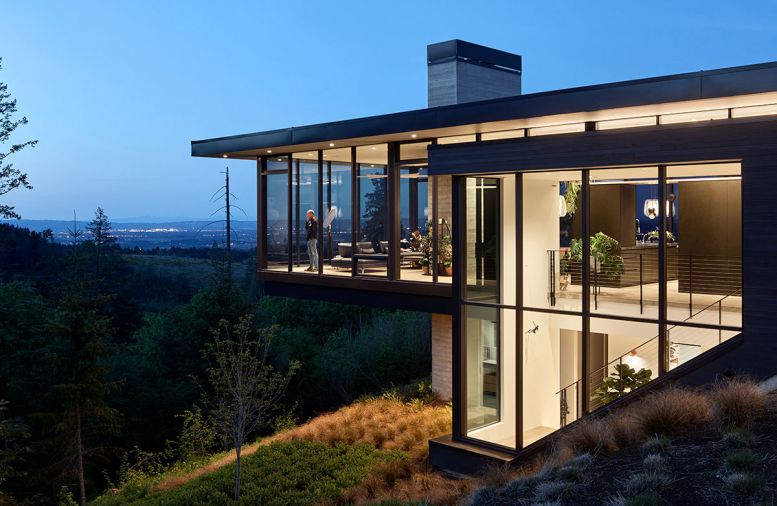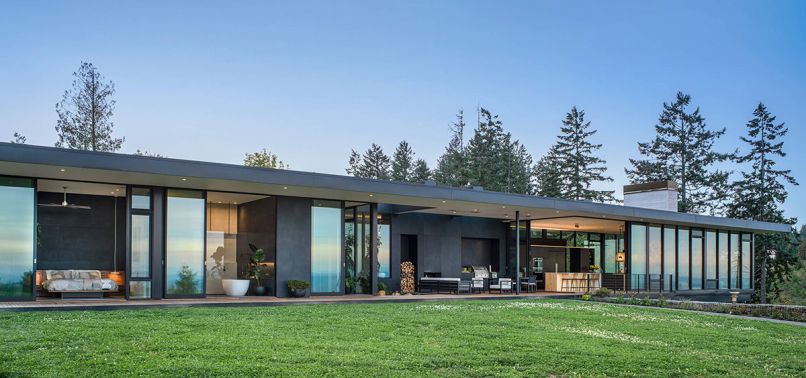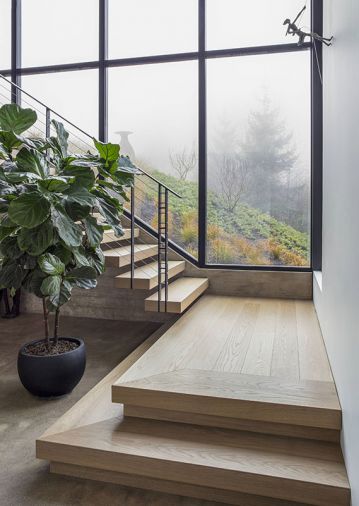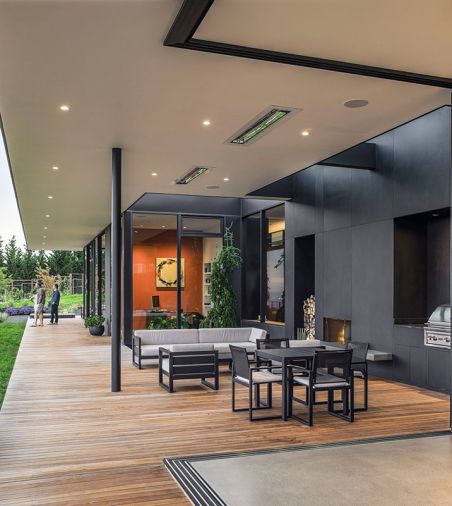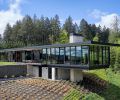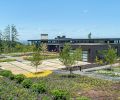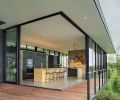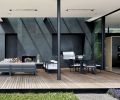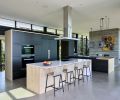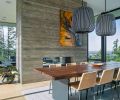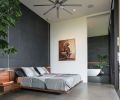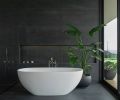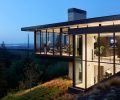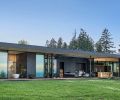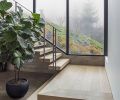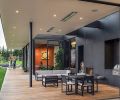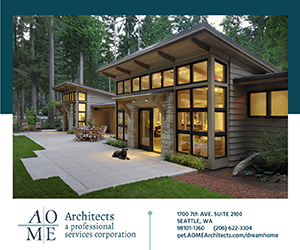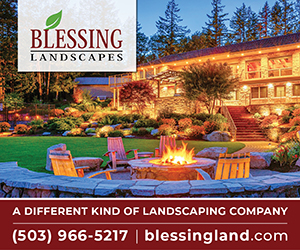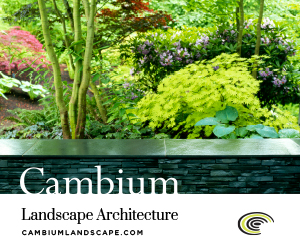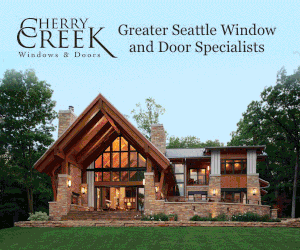This house, deep in wine country in Yamhill, Oregon, was always going to have some drama. That’s largely because of its site, which rises up to take in a view of the land as it unfurls to five mountain peaks in the distance. (That would be Jefferson, Hood, Adams, Rainier, and St. Helens, to be exact.) “The view hits you right away,” says project manager Brian Campbell, of Portland-based firm Scott Edwards Architecture. “You can see all of the mountains lined up on the horizon, which was the impetus for a lot of the house’s design.”
After coming around the curve of the driveway, the house delivers a more immediate surprise than those distant mountain views, as its long, linear form cedes to a dramatic cantilever off to one side. Floor-to-ceiling windows give it a lightness, as though this part of the home is floating over its surroundings. The cantilever was suggested at the beginning of the design process by the homeowners, who bought the land with the intent to retire from city life and make art. “Coming in the door with this killer idea is really cool because then you have the ‘Okay’ from the client to really push things,” says Campbell.
To that end, the team located the living and dining room in the cantilevered portion, with three walls of Fleetwood windows capturing 270-degree-views. A concrete chimney column pierces the center of the suspended section to pin it to the hillside. The ease of its finished form belies the high level of coordination that the structure necessitated in the design and construction process.
“The cantilever was quite a challenge because it’s supported by the concrete board-formed chimney. There are four, 40-foot-long beams, each 10,000 pounds, that support this cantilever,” says contractor Ed Valik of iBuildPdx, who brought in cranes to hoist the beams over the hillside and put them precisely in place. “That’s the cool thing about the house though, is that hidden structure. People can look at it and go, ‘How does it do that? How is that floating?’ Well, there’s a lot of design, engineering, client input, and execution that needs to happen to put it all together.”
That collaboration between all of the components went smoothly, thanks to the longstanding familiarity between everyone involved. On the design side, the architecture team, including Rick Berry, Joe Broders, and Campbell, worked with interior designer Cameron Cruse, also at Scott Edwards Architecture, so architecture and interior finishes meshed fluently. “It’s nice to have interiors in house at the firm because we work together as a team a lot, and speak the exact same design language,” says Cruse.
Scott Edwards Architecture and iBuildPdx have also completed a number of projects together. “Ed and his whole team are great,” says Campbell. “What I love about them, is that they’re not just reading our drawings and doing it. Rather, they have a feel for the design as well.” That’s because Valik trained in architecture before transitioning into construction to form iBuildPdx. “Every project that we’ve done together is a success because of the collaboration,” says Valik, noting that while every job might be different, everyone approaches it with the same attitude towards finding solutions together.
Rounding out the group is landscape architecture firm Shapiro/Didway. Working with the clients’ needs, their approach was to balance modern architectural plantings with nods to the owners’ love of art and the larger agricultural setting, creating a “modern farm estate,” says project manager Aaron West. Thus, there’s an artful formal entry courtyard at the front and a sculpture garden, but also a pollinator lawn and garden, a fruit orchard, and large vegetable garden. “The homeowners enjoyed growing and preserving their own food, so the goal was to create something self-sufficient without going completely off-grid,” says West.
After the cantilever, the next challenge was to balance the grander views with the intimacy of the site. For that, the design team spliced into the home’s long, linear form, inserting an outdoor room between the main living spaces and an office and primary suite down the hallway. One corner of the kitchen peels back to open to the protected outdoor space, itself pierced with a skylight to let a tree grow through. That external skylight is also doing double-duty, ensuring daylight reaches the adjacent interior rooms.
Beginning at the outdoor room, the rest of the main level is at grade with the yard. A covered wood deck lines the home’s perimeter, and along with sliding glass doors in every room, it fosters a fluidity between inside and out, as one steps from the interior concrete floor, to the deck, and into the grass.
The material choices further blur inside and out in a few ways. For starters, the palette, including steel, concrete, and wood, was kept earthy and organic, says Cruse. “Even the countertops have a rock mineral cast to them. The finishes from the inside connect with the finishes on the outside to alleviate any feeling of being in an enclosed room.”
For instance, in the kitchen, custom cabinetry made from Richlite, a matte black paper composite, syncs with the blackened steel casework in the nearby outdoor room. That same steel is implemented in the primary bedroom behind the headboard, and in the nearby bathroom, a freestanding tub is ensconced in inky almost black tile, all of which echoes the exterior siding from Lakeside Lumber, cedar stained a charcoal hue. “Overall, it’s a restrained palette, so we didn’t go crazy with too many things,” says Campbell. “All the lines are clean and everything’s simple, but does have a richness, and an almost textural quality that elevates it.”
In keeping with the precedent set by the cantilever, the team also played with a number of suspended elements throughout, from the bedside lighting and wall-hung sinks, to the staircase that connects the upper level to the guest quarters downstairs. Not unlike the cantilever, the staircase treads appear to float atop its hidden steel structure, set against a bank of windows that follow the slope of the hillside.
For all the initial drama posed by the site, the finished home delivers a lot of peace and contemplative moments. Whether standing in the living room watching the clouds clear off the mountains, or holing up in the studio to make art, or sitting before the fire in the outdoor room as the sun sets, the home-owners can retreat without having to go far at all. “It’s like you’re entering a whole other world,” says Valik. “It’s an oasis.”
PROJECT SOURCES
CONTRACTOR
iBuildPdx Company LLC
ibuildpdx.com
ARCHITECT & INTERIOR DESIGN
Scott Edwards Architecture
seallp.com
LANDSCAPE ARCHITECT
Shapiro/Didway
shapirodidway.com
SIDING
Lakeside Lumber
lakesidelumber.com
INTERIOR DOORS
Portland Millwork
portlandmillwork.com

